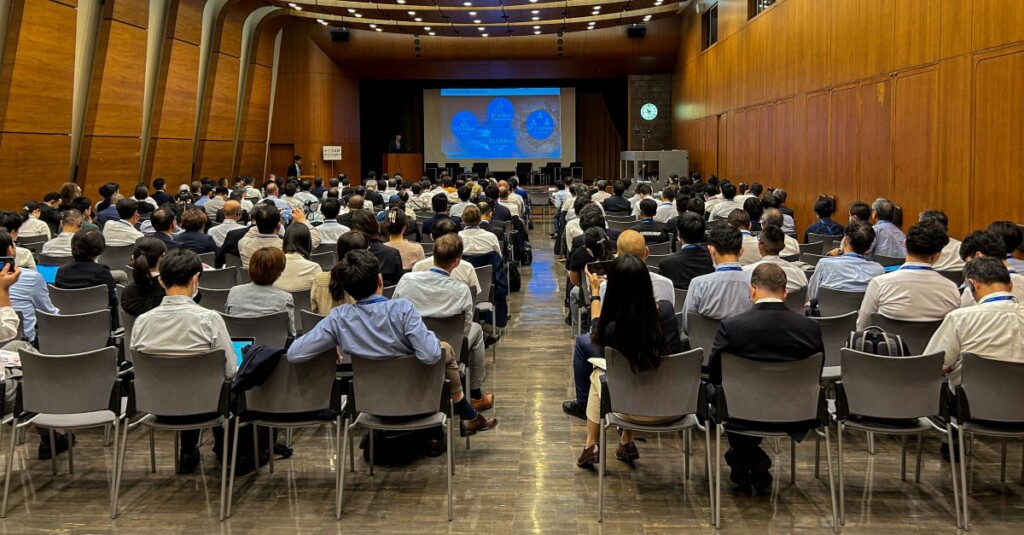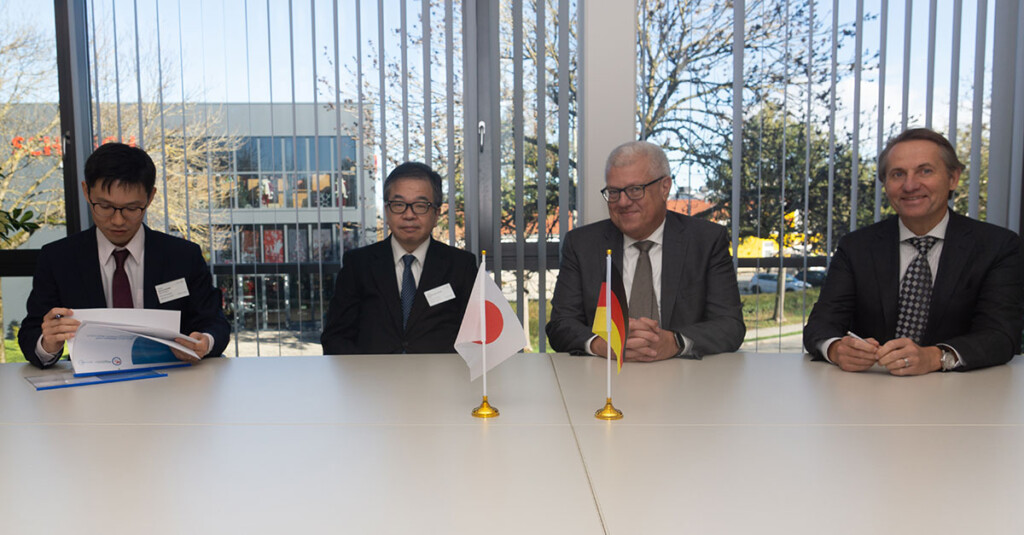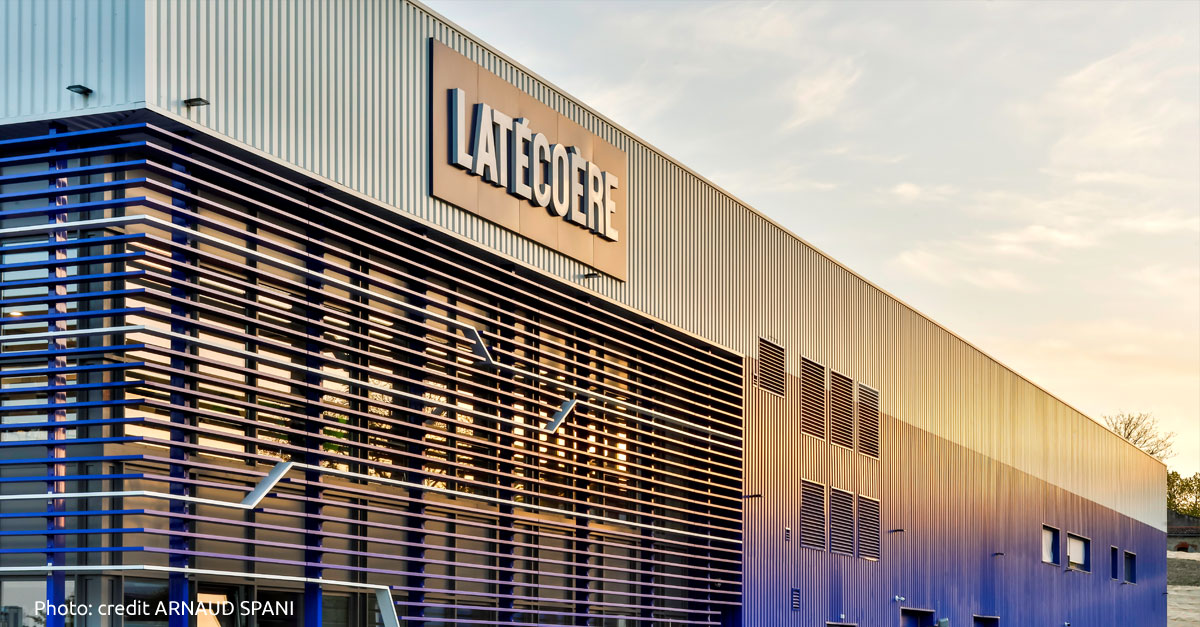Skip to content
From 2018 to 2021, the value of production in the Leonardo-led supply chain grew by 14 percent, from 21.4 to 24.4 billion euros. How was this possible? Leonardo is a large defense and aerospace company, a sector that in Italy includes other major players such as Thales Alenia Space, Avio Aereo and Macaer. The company led by Roberto Cingolani, just in 2018 initiated the important Leap (Leonardo Empowering Advanced Partnerships) program with the dual purpose of creating a digitally integrated ecosystem and promoting advancement in terms of innovation and resilience of strategic suppliers. Quality, cost, time, and technology utilization targets were defined. Then, Leap evolved: sustainability targets were added, with Leap - Partnership for Sustainability. But all this would have been difficult to achieve without AirSupply.But what is AirSupply? It is a powerful tool for purchasing departments (provided by SupplyOn, a company with headquarters in Hallbergmoos, near Munich, but also with offices in China and the United States). It is a shared industrial Cloud platform that optimizes more than just the working relationship between the manufacturer and suppliers, but also communication with suppliers in the downstream supply chain. It enables suppliers not only to connect and receive purchase orders; but also to change, within certain limits, delivery times and quantities. Above all, the platform is characterized by high visibility: suppliers can see if there is a decrease in demand from Leonardo's customers, and based on that they can adjust their raw material purchases. If, on the other hand, demand is robust, they can make longer-term purchases, which result in financial savings. This has increased the resilience of the supply chain, and allowed Leonardo to shorten lead times.87 percent of the 4,000 suppliers using the platform are SMEs. For example, Lombardy-based Logic (active in the development of avionics and electromechanical subsystems and components); Marche-based Civitanavi Systems (which makes inertial navigation and stabilization systems); Apulia-based Manta Group (which produces aerostructures for both fixed and rotary wings); and Campania-based Ala (active in the distribution and supply of advanced logistics services). Leap's next step? That of working on CO2 emissions. The context is still the Partnership for Sustainability, but the idea is to reduce the environmental impact of companies. That is the challenge for the next few years, and it concerns, of course, the whole supply chain. Progress toward the targets will be measured scientifically.Giacinto Carullo, Chief Procurement & Supply Chain Officer at Leonardo, talks about all this.What information systems do you use for dealing with your supplier network? What technologies?We use the AirSupply system, a powerful procurement management tool used by large Groups such as Airbus, Thales, Safran, Dassault, Liebherr, Premium Aerotech and Daher. It was to harmonize and standardize collaboration with suppliers to have a common digital platform and procurement process within the group. AirSupply enables high traceability, responsiveness and inventory control in our supply chain. First, it was piloted, for indirect spending, by Leonardo Global Solutions; then, for direct procurement, by the Aircraft and Aerostructures divisions; and finally, by the Helicopters and Electronics divisions. Essentially, it is a Cloud portal: suppliers connect and receive purchase orders. Most importantly, they have visibility into confirmed orders, with the ability to modify them.What exactly does the ability to change confirmed orders mean? Within what time frame can they do so and to what extent?The time frame depends on the type of supply, e.g. for products within the 12-month lead time, typically the first two to three are "frozen," followed by three to six "flexible" months, during which, in agreement with Leonardo logistics, it is possible to change the quantity - by 10%, 15% - and the delivery date. There are then several additional "forecast" months, in which the supplier sees commitment, but this does not necessarily result in an order.And who benefits from not translating a pledge into an order?In the AirSupply system, when there is a decrease in our customers' demand for Leonardo's products, our suppliers see it. As a result, they can make their own calculations and, for example, buy a smaller amount of raw materials that they need to make their components. Conversely, this long-term visibility allows suppliers – when they know demand is intense – to make long-term purchases, which generally saves them money. All of this has the dual effect of increasing supply chain resilience, especially in times of stress; and allowing lead times to be shortened.Does this mean that suppliers must adopt AirSupply?The system is a KPI in our Industrial Sustainability Roadmap. In short, AirSupply adoption is a key driver for supply chain digitization and high-level procurement. Our goal is to use the portal for more than 80 percent of supplier transactions. More than 5 thousand suppliers are currently using it, including more than a thousand in "full" digital integration mode. It means that the most important suppliers are already operating on the platform, which helps to create a digitally integrated and synchronized supply chain ecosystem.How does this fit in with Leap - Leonardo Empowering Advanced Partnerships - a program launched in 2018?Leap is a program to transform and accelerate the development of the supply chain. It is designed as a constantly evolving model. The initial point, but also the "key" point, is that it is intended to increase the level of partnership. The excellent supplier becomes a long-term, "stable" partner, and consequently gains visibility in the system, and enjoying the certainty of the relationship can invest in its own business and growth (including technological growth) contributing to its competitiveness, ours and that of all the other players involved. Partners are called upon to increase quality and must be excellent in operations. This is first and foremost in our interest. Our CEO, Alessandro Profumo, has repeatedly stressed this; Leonardo cannot be sustainable and competitive if its supply chain is not: the quality and safety of the final products depend on it, as do the flexibility and ability of the company's business model to adapt to technological challenges. What we offer our suppliers is a long-term perspective of cooperation, putting them in the best conditions to be able to plan and pursue their investments over the long term, thus also supporting their ability to compete independently in the market. Supplies to meet the fulfillment of our contracts can in fact last for as long as 20 years; it is good for the supplier to remain in the market for an equivalent period, to provide the components and services essential to us and our customers. AirSupply strengthens the partnership and makes it more streamlined and secure. Moreover, in 2021 Leap underwent a major upgrade.What update have you made to Leap in 2021?The program has evolved into Leap Partnership for Sustainability. The dimensions of sustainability have been added to those of quality and technology. Now partners are required to address security, health & safety, environmental and social responsibility, risk management. And they must share their strategies in this regard. In short, in 2021 we started building our ideal partner. Starting with an assessment.Did you carry out an assessment in 2021?Yes. The assessment involved 500 suppliers, the most important ones, and covered something like 200 KPIs. Already the fact that they were confronted with all these dimensions was important, for them, because it showed them the path to take by involving the staff. However, after "measuring" the degree of maturity of the partners on the dual quality-sustainability front, we began the maieutic approach.What does the maieutic approach consist of?We guided the 500 partners along the growth path, helping them to achieve their goals. With necessarily different actions from each other, based on the weaknesses of the partners manifested during the assessment. Some showed greater difficulties on processes, some on other aspects. In any case, we outlined a plan with two main objectives.What are the two main goals of your supply chain growth strategy?First, that of ensuring the strength and sustainability of the supply chain. Precisely because suppliers are called upon to provide us with services and components for periods of up to 20 years, they must be able to continuously improve their performance – the bar of objectives is continually being raised. Second, that of creating a significant number of Tier-1s (first-tier suppliers; typically, they know the strategies of the OEMs, know what technologies the OEMs are investing in, and are aware of their projects. In some cases, based on this information, they direct the whole supply policy and regulate its flows – note of the editor) and Tier-2 (basically specialists, who develop individual components on the basis of know-how established over the years – note of the editor) of international dimensions. Moreover, we are giving up supplier exclusivity. The fact that they have a strong partnership with us does not mean that they cannot or should not work with competitors. If they are good for us, they will be good for Airbus, for example. And in the marketplace they become more sound, more competitive and more resilient, helping to build a positive-sum game. All this merely increases the sustainability of our supply chain.What is the next step?The next step is to work on CO2 emissions. The context is still the Partnership for Sustainability, but the idea is to reduce the environmental impact of companies. That is the challenge for the next few years, and it affects, of course, the whole supply chain. Progress toward the targets will be measured scientifically, because Leonardo is part of Sbti (Science Based Targets initiative), a global initiative established in 2015 (by a collaboration between several organizations, such as the Carbon Disclosure Project, the United Nations Global Compact, the World Resources Institute and the World Wide Fund for Nature – note of the editor) to help companies set emission reduction targets in line with climate science and the goals of the Paris Agreement. The metrics used are very precise. The goal, for Leonardo, is a 40 percent drop in emissions by 2030.Does your supply chain generate a lot of emissions?Actually, the largest share of emissions is certainly downstream, among those who use, for example, our helicopters or airplanes. We have few energy-intensive factories; when it comes to the aerospace industry, this is equivalent to 2 percent of global emissions – but 1.5 percent is due to those who do aviation. So almost all of it.Among other partnership activities, you help your suppliers from a financial perspective. How does that work?Here, the "how" is very important, because it makes a difference. Results are generated or not generated because of the "how." Specifically, we have made agreements with seven banking groups to do supply chain financing. For example, we as Leonardo enjoy special factoring conditions (the assignment of credit – note of the editor): it was agreed that they should be extended to our suppliers. These moreover can get advances not only on invoices, but also on Leonardo's orders. For them it is a great help: since the lead time lasts 12 months, they must expose themselves financially; if they can get financing from banks on good terms, it is easier for them.And why did the banks agree to it?Because banks are familiar with our supplier program, and as a result they think that in the case of our suppliers we see a decrease in credit risk.There were 67 key suppliers of Leonardo, with a turnover of 1.3 billion euros and a total of 7,500 employees, who participated in the Elite-Leonardo Lounge program developed with Elite di Borsa Italiana. What did it consist of?In a development path aimed at entrepreneurs and top managers of supplier companies to accelerate their growth by facilitating access to capital, network, and key skills. Through it, companies were able to create a long-term strategic business plan and shared it with Leonardo. A key step: by overlaying our plan with theirs, we were able to assess whether the suppliers were heading in the same direction as us, especially in terms of technological development. What's more, about 50 M&A transactions have occurred in our supply chain; 70 percent of these involve companies that have gone through the Elite route. It means that they felt the need to strengthen themselves in terms of size, and this is good for us; it is also good for them from the point of view of competitiveness.What are the current obstacles for Leonardo's supply chain?For Italian suppliers, the problem is to be able to be competitive in the European context. As for the average size, these are small companies; as for the level of digitalization, it is good in relation to the average Italian company, but it is not yet at the level of the European average. In short, these companies need to be able to make a major leap forward. For this, a great product is not enough: you need planning, management, investment, long-term vision. And you must work on all these dimensions at the same time. It is not easy, but it is certainly not impossible. This interview by Marco de' Francesco has been published in Italian in the online magazine Industria Italiana: https://www.industriaitaliana.it/leap-leonardo-airsupply/

Nagoya, Japan – Following our jubilant celebration of SupplyOn China's 15th anniversary, we wasted no time in setting up shop at Aeromart Nagoya, a leading aerospace event taking place from September 26 to 28, 2023. Aeromart Nagoya holds great significance for Japanese aerospace OEMs, their suppliers, and the broader Asia-Pacific region.A showcase of aerospace excellenceThe event kicked off on day one with presentations and workshops at the Nagoya Chamber of Commerce & Industry. Days two and three saw a flurry of B2B meetings and additional workshops at the Nagoya Trade & Industry Center. The evening of the second day was graced with a captivating cocktail reception at the Aichi Museum of Flight, where industry leaders gathered for relaxed networking.Aeromart Nagoya is more than just an event; it's a nexus for industry leaders, suppliers, and experts to explore the latest aerospace technologies and supply chain trends, fostering continuity and enhancing manufacturing competitiveness. AirSupply: elevating the aerospace supply chainRecognizing Japan's growing importance in the aerospace market, SupplyOn seized the opportunity to present our AirSupply solution, which plays a pivotal role in optimizing supply chain management within the aerospace sector. In an industry where precision and coordination are paramount, AirSupply facilitates seamless collaboration between customers and suppliers. It aligns with the aerospace industry's intricate processes, enabling proactive capacity planning, real-time adjustments to delivery quantities and dates, and comprehensive tracking of orders and deliveries through a common web platform.AirSupply doesn't just strengthen relationships between manufacturers and suppliers. It also improves communication throughout the supply chain, creating more resilient supply chains through early detection and response to potential disruptions.The solution being the industry standard in Europe, we are now taking it to Japan. We are committed to deepening our presence in the Asia Pacific region. Our goal is to enhance collaboration, innovation, and supply chain efficiency in the global aerospace industry.

On October 25, 2022, SupplyOn was honored to welcome a delegation from the Japanese Aerospace Industry, for a signing ceremony about a Proof of Concept (PoC) with The Society of Japanese Aerospace Companies (SJAC) and Eva Aviation (as Japanese Consulting Company, and now part of SJAC), involving three major Japanese Aerospace OEMs.The PoC was about jointly exploring our supply chain collaboration solution for the aerospace industry, AirSupply.The Japanese delegation not only visited SupplyOn, but also attended the AIRTEC fair in Munich and then travelled to visit BoostAeroSpace in Paris, the AirSupply Governance Organization.The proof of concept has meanwhile successfully been conducted involving several Japanese Aerospace companies, as first step for further possible collaboration.SupplyOn is committed to engage in the Japanese market, and in that context will have a booth at the upcoming Aeromart Nagoya (September 26-28, 2023).

"A new era of aviation: Sustainable. Resilient. Together!" Under this motto, Prof. Dr. Walther from IPM welcomed around 1,900 participants and 130 exhibiting organizations to this year's Aviation Forum, now in its 12th year. Munich was the venue for the second time.The event's title set the central themes: climate-neutral aviation, a resilient supply chain amidst a renewed rise in production rates, and partnership-based collaboration between all stakeholders. All three are key success factors for mastering the challenges of the future.Goals and strategies for more sustainability, resilience and competitivenessIn his opening speech, Airbus CPO and Aviation Forum host Jürgen Westermeier highlighted his company's ambitious goals: The production of 75 A320 family aircraft per month and zero-emission flying by 2050.In her highly acclaimed presentation, Marjolaine Grange, Head of Purchasing at Safran Group, spoke about the systemic axes along which performance and competitiveness in the aerospace supply chain can be enhanced. She emphasized the importance of SupplyOn AirSupply as a collaboration standard for aerospace SCM processes. It is used by 10,000 suppliers, including currently 550 at Safran alone and 700 more planned in the future.The industry standard AirSupply is growingSupplyOn works very closely with the industry consortium BoostAeroSpace for AirSupply, making it a successful industry standard and community solution.The AirSupply community continues to grow: this year, SupplyOn joyfully welcomed new AirSupply customer MT Aerospace to its booth:Future-proof and efficientKlaus Richter, former host of the Aviation Forum and now CEO of the Diehl Foundation, spoke about what it means to bounce back after the crisis as a major Tier 1 and to prepare properly for the future.Highlights of the two-day Aviation Forum from my point of view were, besides the expert presentations, the many personal conversations at the booths, the exchange at the Gala Dinner, which has become a tradition by now, as well as the Executive Workshops with brainstorming on the supply chain of the future.Factory Tours: Aviation hands-onThe Aviation Forum concluded with the Factory Tours. Destinations for these tours included SupplyOn customers Airbus Defence & Space and Deutsche Aircraft, as well as key industry players such as MTU Aero Engines and GKN Aerospace.The author was impressed by the transition at Deutsche Aircraft from a MRO provider for the Do328 to an OEM/integrator for the new D328eco. The aircraft is set to be developed and manufactured in Germany.Following the still heavily Corona-influenced 11th Aviation Forum last year, it was widely evident how important personal contacts are in an industry which is based on collaboration.The date and location for the Aviation Forum 2023 have already been set: December 5 and 6, 2023, then again in Hamburg.


